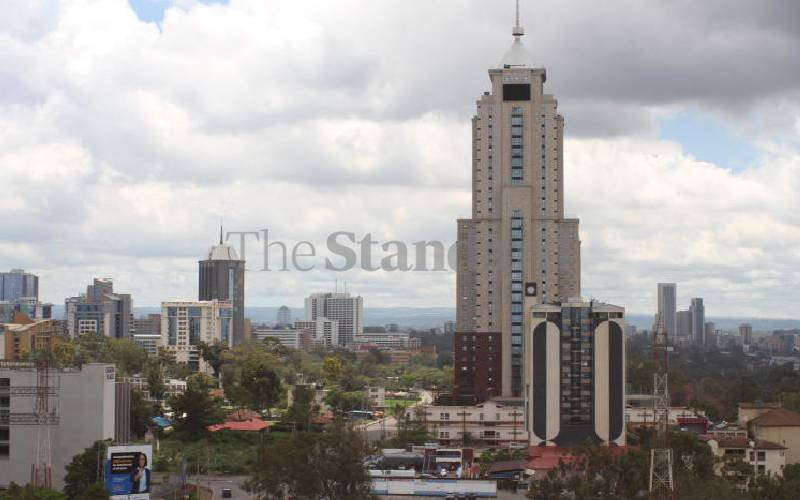Nairobi county proposes new heights for city buildings
Nairobi
By
Pkemoi Ng'enoh
| Feb 20, 2025

The Nairobi skyline could soon change if a proposal by Nairobi County is considered.
Under the Nairobi City County Development Control policy that is currently under public participation, the county will allow developers to go up to 75 floors.
Such areas include Upper Hill, Uhuru Highway, Tom Mboya, Haile Selassie, and University Way.
The number of floors in Riverside, Parklands and Ngara West will be 20, while in Muthangari, Kileleshwa and Kilimani they will be set at 15.
READ MORE
How Nairobi-Addis deal is fuelling surge in Kenya's electricity imports
Family Bank profit jumps 38pc to Sh3.4b on higher interest income
Industry leaders, managers urged to support employees' ambitions
Money trap: Why many Kenyans struggle to grow wealth
Traders feel pinch of Sudan tea export ban
Smaller lenders lead in cheap loans as costs fall marginally
Auto dealer Caetano banks on Chinese brand to boost locally assembled vehicles
How Kenyan youth can get into agriculture
Equity bank to pay record dividend after Sh46.5 billion profit surge
According to the draft, buildings in Umoja, Kayole and Komarock will be allowed to go up to eight levels, while Mathare, Dandora and Korogocho areas will have five floors.
In Kariokor, Mlango Kubwa and Eastleigh, commercial and residential houses will not go up beyond 25 storeys.
Karen, Gigiri, Runda, Kitisuru, Nyari, Muthaiga and Rosyln Estate, areas considered to be home to the rich, have been classified under single dwellings.
This means a building with one or more rooms designed for residential living purposes by one household that is disconnected from any other unit.
In Eastlands, the areas where high-rise buildings will not be allowed include Jacaranda, Sosian Estate, Nasra Gardens, Harambee NCC, Rabai Road Estate, Utawala, Ruai and Kamulu areas.
A three-day public participation for residents, developers, contractors and professional bodies to give their views is underway.
According to Chief Officer Patrick Analo, the development policy has never been reviewed for close to two decades.

